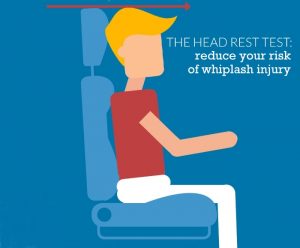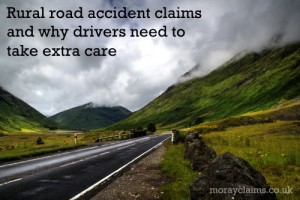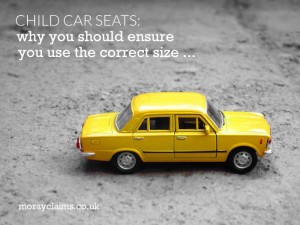Wintry weather is persisting into March around the Moray Firth. Inevitably, in winter, there tends to be an increase in road traffic accidents. At this time of year, we are more likely to be driving in the dark and on roads affected by snow and ice. Repeated freezing and thawing also increases the number and size of potholes in the roads. What steps can you take? Equipment to carry in your vehicle The Royal Society for the Prevention of Accidents (RoSPA) recommends certain basic safety equipment to keep in your vehicle at all times, so you are prepared if the weather deteriorates. This should include a towrope, de-icing equipment, a spare wheel, a torch, a first aid kit and a warm blanket. Checks on the vehicle itself In addition, you should check that your vehicle itself is properly prepared for winter conditions. Check your tyre pressure regularly and ensure that you have sufficient tyre tread as this will reduce the risk of loss of traction and skidding (as well as improving Continue Reading
Whiplash injury: one way to reduce the risks
Whiplash gets a lot of negative press. It is a type of injury where there is scope for people exaggerating their aches and pains to get more compensation or even inventing them completely. The Westminster Government is currently on a mission to weed out spurious claims. On the other hand, if you have ever suffered a whiplash injury to your neck or back, you will know it is not something to be taken lightly. The injury is very real. Whiplash can cause a considerable amount of pain and inconvenience to the injured person. Everyone knows that prevention is better than cure and here’s an idea for simple action you can take to reduce the risk of you being the victim of a whiplash injury. It all boils down to proper adjustment of the head restraints in your vehicle. How best should you position the head rests in your vehicle? It is not sufficient to have a head restraint attached to the top of your seat. You must make sure it is adjusted to be in line with the top of your Continue Reading
Rural Road Accident Claims and Why Drivers Need to Take Extra Care
Rural roads account for over 70% of fatal accidents, according to statistics published by RoSPA. In Scotland, trunk roads, such as the A9 and A96, are maintained by independent companies but more minor roads are the responsibility of local authorities. Of course, the more minor roads tend to have a greater amount of bends and ups and downs. The increased dangers for drivers are obvious: whether it’s from other traffic, such as slow-moving farm vehicles, or from the state of the road itself. Roads authorities can rarely be blamed for accidents A Court of Session decision from June 2012 – arising out of a tragic accident in North-east Scotland - has provided a reminder of the considerable limitations on local authorities’ duties and the emphasis that is placed on the personal responsibility of the individual driver. In these cash-strapped times, the duties the law imposes on local authorities to maintain road markings and signage are not likely to increase in the foreseeable Continue Reading
Accidents on Rural Roads
RoSPA - the Royal Society for the Prevention of Accidents - published a policy paper (August 2010) addressing the safety of rural roads, which could be of interest to you if you have suffered personal injury on the roads in Moray or elsewhere in the North of Scotland. The publication points out that rural roads have not seen as rapid a fall in accident rates as urban areas in recent years. Rural roads still account for over 70% of fatal road accidents. RoSPA is of the view that simply managing the road environment itself can help to reduce the number of incidents where the road is a primary or indirect cause of the accident. According to RoSPA, some useful options are to alter the perceived road width with markings or roadside islands or by changing or removing the centre line. "Forgiving roadsides" can also help reduce the risk and severity of injury sustained if a vehicle leaves the main carriageway for a short period. If you have been injured in a road accident then Continue Reading
Child car seats: another reason to make sure it’s the right one
It’s bad enough to be involved in a road traffic accident in which someone is injured ... ... but it is even worse if that person is a young child. As a parent, you will find it difficult to come to terms with an injury to your child even if the accident was not your fault. What follows is the facts of a case from 2012 where a mother – who was driving the vehicle in which her injured child was a passenger – was not responsible for the accident at all but was still found to be partly responsible for her child’s injury. In this accident, there was a collision between two cars near Wrexham, North Wales. The driver of the other car lost control of his vehicle and it crossed to the wrong side of the road. There was nothing Louise Williams could do to avoid the crash. The driver of the other car was killed. Ms Williams’ daughter, Emma, aged three, was seriously injured. In the back of Ms Williams’ car, there were two child seats. One was a child seat fitted with a harness (for Continue Reading


